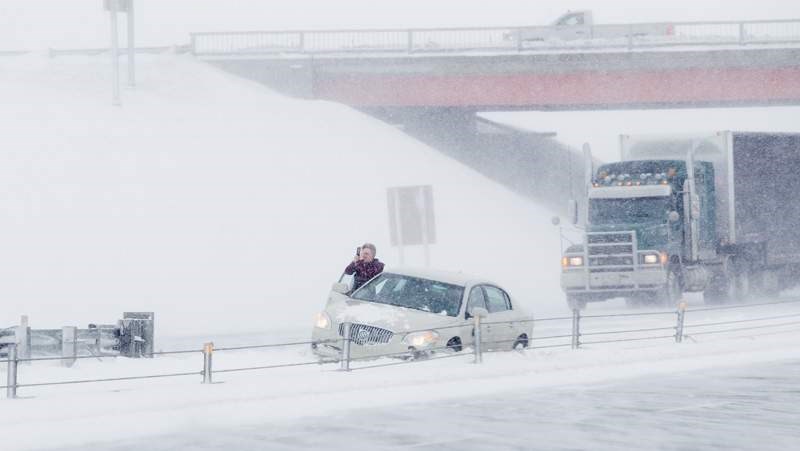Mountain View and Red Deer county drivers are urged to drive according to winter conditions and make sure they have a properly stocked emergency kit in case an accident occurs or they become stranded.
Highway maintenance crews are doing their part to ensure highways are clear as soon as possible, but that takes time, so drivers need to be patient, says Transportation Minister Wayne Drysdale.
“Winter driving conditions can be unpredictable. Our maintenance contractors work day and night to help keep our roads in good winter driving condition. Let's help them out by giving them the space and time they need to work safely,” Drysdale says.
Gene Syvenky, chief executive officer of the Alberta Roadbuilders and Heavy Construction Association, echoes that statement.
“Snowplows have wide blades that motorists may not see because of snow clouds. When drivers are approaching a plow, it's important to remember to slow down, keep a safe distance behind, and not to pass the plow until it pulls over or it is clear to do so,” said Syvenky.
Alberta Transportation and maintenance contractors work together to clear provincial highways all winter long, monitoring road conditions 24 hours a day, seven days a week.
Plowing occurs first to remove as much snow and ice as possible, then any remaining snow is treated with sand, salt or a combination of both depending on conditions.
Since early October, maintenance contractors have been on call, prepared for the worst winter has to offer.
Technology is making things more efficient, according to Alberta Transportation.
Using satellite radar information and GPS technology to identify priorities and locate current snowplows, crews are able to mobilize and co-ordinate plowing faster than ever before.
Alberta Transportation has some tips to enable drivers to arrive at their destinations safely:
• Before heading out on the road, check road conditions at 511.alberta.ca or via Twitter @511Alberta. 511 Alberta has the most up-to-date information on road and weather conditions, including access to more than 124 highway cameras throughout the province. Users can download the 511 Alberta mobile app for free at the Apple App Store and Google Play.
• Prepare your vehicle with winter tires, an emergency kit and warm clothing for everyone on board.
• Allow plenty of time to get to your destination safely.
• Stay off the roads entirely when conditions warrant or when advised by the RCMP or local officials.
Facts:
• In 2013, Alberta had 16,939 collisions during the month of December, the highest number of any month that year.
• In order to properly blade off the snow and apply salt and sand to the road, snowplows drive at 50 km/h.
• Plows can't make too much headway during heavy snowfalls or when there's lots of blowing snow. Putting salt and sand on exposed highways is normally only effective at temperatures above -15 C and when the wind is not blowing snow onto the driving lanes.



